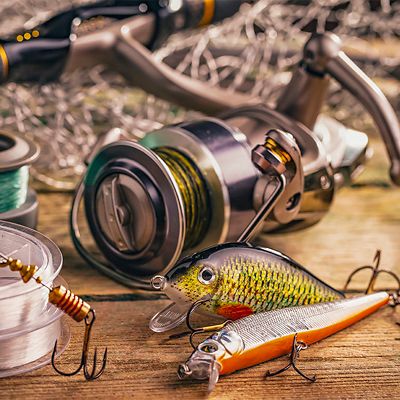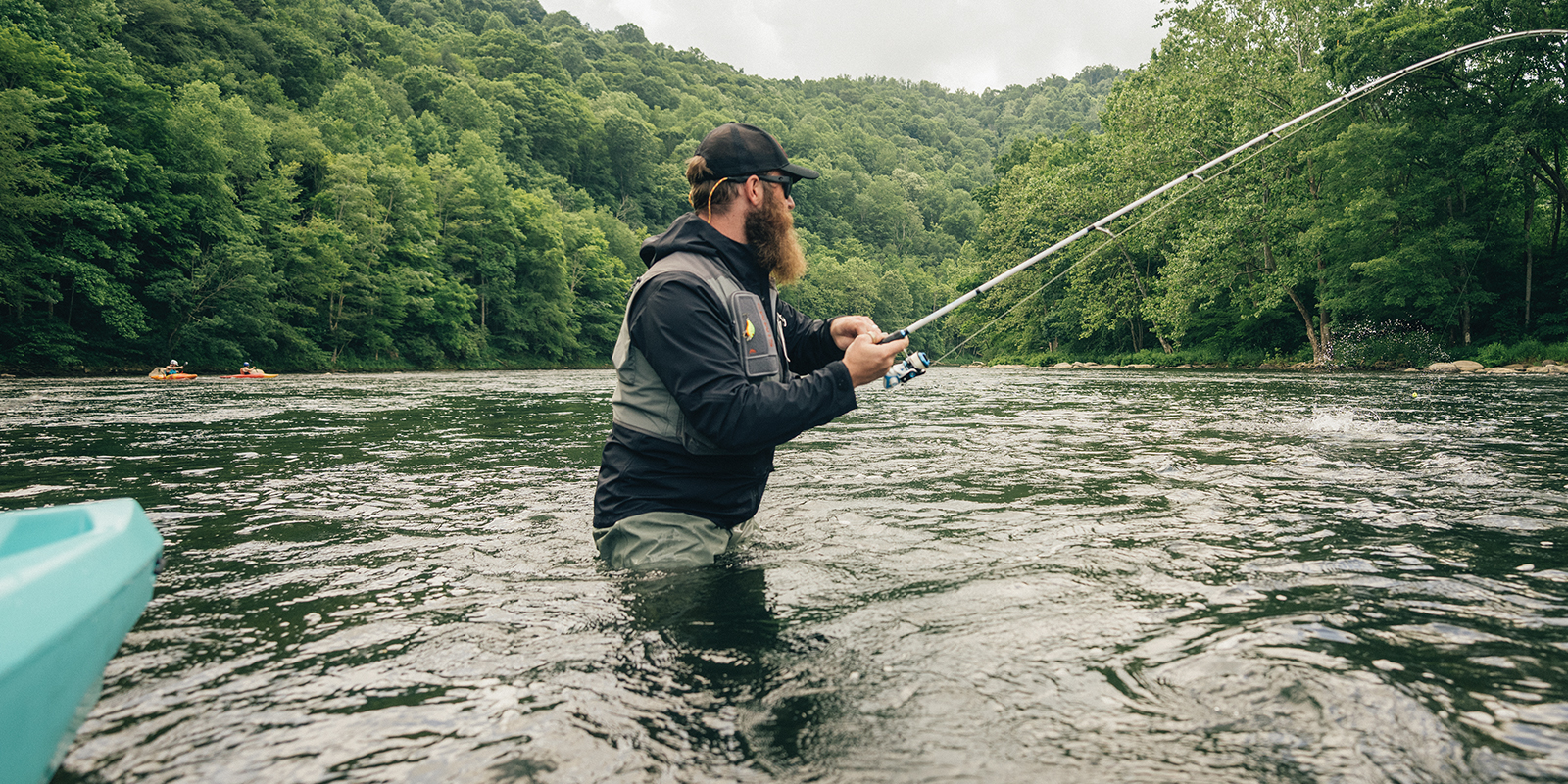A reel does the work of letting your line out during a cast, and when you hook a fish, it does the opposite by hauling in the line along with your catch. There are two general types of fishing reels to choose from: spinning reels and casting reels. The type of reel you need will depend on what you’re fishing for, as well as how you like to fish.
Note that fly fishing uses a different type of reel designed for a heavier line to propel the cast with a nearly weightless lure (the fly). Traditional anglers, on the other hand, cast by using the weight of a heavier lure while managing a nearly weightless line. That’s where the choice between a casting and a spinning reel matters.
Questions to Ask Yourself
Before you begin shopping, determine what you need in a traditional fishing reel.
Do I value accuracy or ease of use?
A casting reel might be more accurate, but using it properly demands some real skill. If you want to prioritize ease of use, opt for a spinning reel.
Where will I fish?
Get a reel that’s built for the type of water you fish in: salt or fresh.
What am I fishing for?
Choose a reel that is large enough, and can accommodate the appropriate line weight, for the type and size of fish you’re after.
Types of Reels
Both types of reels to choose from—spinning and casting—have key advantages and drawbacks for fishing.
Spinning
Spinning or “open-faced” reels are mounted on the underside of your fishing rod. At the core of these reels is a stationary spool. A moveable metal wire called a bail keeps the line from spinning off the spool, and when you reel the line back in, the bail spins around the spool to wind up the line in an orderly fashion.
Spinning reels are great for casting lighter lures. When you flip open the bail to cast, the design of a spinning reel creates very little resistance as the line unspools, which means you can cast lighter lures farther. They’re popular for topwater baits as well.
Casting
Casting or baitcasting reels feature a circular spinning spool that’s mounted on the top of your fishing rod. As you cast or reel in, the entire spool spins to let the line out or bring it back in. This allows casting reels to have winch-like power that’s great for landing bigger fish and casting heavier lures.
Many anglers also prefer casting reels for their improved accuracy compared to spinning options, but that really depends on the person handling the rod: Accurate casting requires a practiced hand. In addition, it’s possible to get knots and tangles in your line while casting if the spool spins faster than the line can exit the reel.
Get the Right Reel for Your Rod
Because spinning reels mount to the underside and casting reels mount to the top of your rod, you will need to get a rod built for the type of reel you want to use. If you already have a rod, make sure you buy a reel that’s compatible with it.




